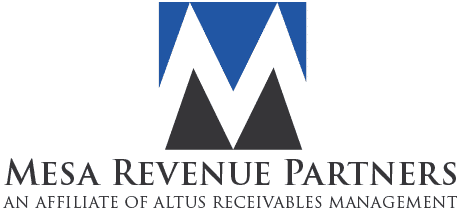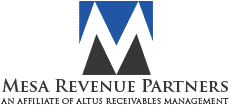How Structured Interest-Based Repayment Options Boost Debt Recovery Success
Struggling to recover outstanding debts without compromising your bottom line? Interest-bearing payment plans might be a smart choice as they’ve been gaining popularity as a strategic solution in modern debt recovery.
These plans allow creditors to collect on overdue balances while earning interest over time because they turn passive accounts into active financial returns. But what exactly are interest-bearing payment plans, and how do they work?
Simply put, they’re structured agreements that let consumers repay debts in installments, with added interest that benefits the creditor. When used correctly, they can offer a fair, compliant, and sustainable path to resolution for both parties. But there’s much more than that, and that’s what we’ll explain in the following article.
Whether you’re handling in-house collections or partnering with a commercial collections agency, understanding this tool can significantly improve recovery rates while preserving long-term client relationships.
What Are Interest-Bearing Payment Plans?
Interest-bearing payment plans are structured agreements that allow a debtor to repay a balance over time, with interest added to each installment. Unlike traditional payment plans that divide the total owed into equal payments, these include a set interest rate (similar to a loan) so the creditor earns additional income as the debt is repaid.
These payment plans are also known as interest-bearing loans due to their process—it works quite similar to a loan, hence its name.
Key components of interest-bearing payment plans include:
- Lender: An individual or institution that provides funds, aiming to recover the principal amount plus interest.
- Borrower: The recipient of the loan, who may be an individual or a business. Borrowers seek funds for various purposes, such as home purchases, business expansion, or educational expenses.
- Principal: The initial sum of money loaned to the borrower. This base amount is repaid in installments, along with interest.
- Interest: The cost associated with borrowing money, calculated as a percentage of the principal. Lenders charge interest as compensation for providing funds upfront.
For example, a borrower with a $100,000 loan at a 6% interest rate will incur an additional $6,000 in interest annually. This interest accumulates over time, increasing the total repayment amount.
Key Benefits Of Interest-Bearing Payment Plans For Creditors
Interest-bearing payment plans offer many advantages for creditors looking to improve recovery outcomes:
- Higher recovery amounts: Adding interest increases the total repayment, helping offset the time and effort involved in collecting the debt.
- Cash flow over time: Regular, predictable payments support better financial planning and ongoing cash flow.
- Incentive for faster repayment: Interest charges often motivate debtors to settle accounts sooner to avoid paying more over time.
- Passive income generation: The interest component creates an ongoing revenue stream without additional collection efforts.
- Better consumer engagement: Offering flexible, interest-based plans can build trust and improve debtor cooperation.
For businesses working with a commercial collections agency, these benefits make interest-bearing plans a practical, scalable tool in modern debt recovery strategies.
How Interest-Bearing Loans Work In Debt Collection
Interest-bearing payment plans are crucial for debt collectors that want to recover outstanding balances efficiently while complying with legal requirements. Here’s how you can implement it in your plan:
Structured Plan
In debt collection, interest-bearing payments are generally set up as installment plans. This arrangement allows the borrower to repay the principal and interest over time through regular payments, each of which reduces the outstanding balance. For debtors, this means a gradual path to settling their debt, while your debt collection team benefits from a consistent income stream as the loan is amortized.
Interest Rate
The interest rate is crucial in debt recovery because it ensures the complete collection of the principal and a reasonable amount of accrued interest. Factors such as market conditions, the debtor’s creditworthiness, and legal limits all influence these rates.
It’s essential for debt collectors to meticulously evaluate these elements when establishing interest rates, guaranteeing they are competitive, equitable, and in adherence to all local and federal regulations.
Amortization Programs
Amortization schedules are crucial for the effective management of interest-bearing payment plans. They itemize loans into manageable monthly payments, encompassing both principal and interest. This transparency allows debtors to clearly discern the portions of their monthly payment allocated to principal reduction versus interest.
Sales To Third Parties
A key feature of interest-bearing loans is the ability for lenders to sell them to third parties. This involves transferring the right to receive repayments from the original creditor to a new entity. While this practice can mitigate risk or free up capital, debt collectors must ensure that the terms of such loan sales are transparent and adhere to all applicable regulations.
How To Calculate Interest For An Interest-Bearing Loan?
Calculating interest for an interest-bearing loan is key to understanding how much a debtor will repay over time. These loans include a set interest rate applied to the principal balance, and the total repayment depends on the interest type and loan duration.
The most common method used in debt recovery is simple interest, calculated using the formula:
- Interest = Principal × Rate × Time
- Principal: The original loan amount
- Rate: Annual interest rate (as a decimal)
- Time: Loan duration in years
Example:
Let’s say a debtor owes $1,000 with an annual interest rate of 10%, to be paid over 1 year:
Interest = 1,000 × 0.10 × 1 = $100
The total repayment would be $1,100, either spread over monthly payments or in a lump sum, depending on the agreement.
When using amortized or compound interest, the calculations become more complex, often requiring financial software or a commercial collections agency with the right tools to automate schedules and ensure compliance.
Offering transparent interest terms not only improves recovery but also builds trust with debtors.
Compliance Tips For Offering Interest-Bearing Debt Plans
When using interest-bearing payment plans as part of debt recovery efforts, staying compliant with federal and state laws is critical.
One of the most important laws governing the industry is the Fair Debt Collection Practices Act (FDCPA). This federal regulation outlines how debt collectors must communicate with consumers and helps prevent abusive or deceptive practices.
Here are some key areas to keep in mind:
- Interest rate limits: Any interest applied must comply with state usury laws and federal guidelines.
- Validation of debt: Collectors must provide a written notice within five days of first contact. This notice must include the debt amount, the original creditor’s name, and the consumer’s right to dispute the debt within 30 days.
- Prohibited communication: Contacting a debtor before 8 a.m. or after 9 p.m. is restricted. If the consumer requests no further contact, communication must cease.
- Misrepresentation and harassment: It’s illegal to threaten legal actions that cannot be taken, use aggressive or abusive language, or mislead the consumer about the debt terms or consequences.
These rules directly impact how interest-bearing loans and other repayment structures are offered.
How To Successfully Implement Interest-Bearing Plans
Implementing interest-bearing payment plans requires the right balance of strategy, technology, and transparency. Start by offering flexible payment options based on each debtor’s financial situation—such as extended terms, early repayment incentives, or delayed interest accrual. This flexibility increases engagement and reduces default risk.
Next, leverage automated tools to streamline operations. Modern debt recovery platforms can handle interest calculations, send reminders, and track performance in real time.
Equally important is clear communication. Debtors should fully understand the plan’s terms, including interest rates, total repayment amounts, and schedule. Transparency builds trust and helps avoid disputes.
Monitoring plan performance is also essential. Adjust terms when necessary based on repayment behavior or financial changes, and use performance analytics to guide decisions.
Lastly, consider using interest-bearing accounts to securely hold and manage payments while generating passive income.
Avoid These Common Pitfalls With Interest-Bearing Payment Plans
While interest-bearing payment plans can be effective, there are key mistakes that can undermine recovery efforts and create compliance risks:
- Setting excessive interest rates: Charging interest above legal limits can lead to disputes, penalties, or debt invalidation. Always verify state and federal usury laws.
- Lack of transparency: Failing to clearly disclose interest terms, payment schedules, or total repayment amounts can damage trust and lead to consumer complaints or legal action.
- Ignoring compliance requirements: Not following FDCPA guidelines—such as providing debt validation or respecting communication rules—can expose collectors to serious legal consequences.
- Overlooking plan adjustments: Not reviewing or updating payment plans based on the debtor’s financial situation can lead to missed payments or plan failure.
Hire a Trusted Commercial Collections Agency For Professional Guidance
Whether you’re managing accounts internally or looking for expert support, working with a reliable Arizona commercial collections agency can make all the difference. Contact us at Mesa Revenue Partners today to learn how interest-based repayment structures can work for your organization and make the most of its finances.








